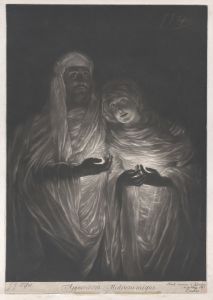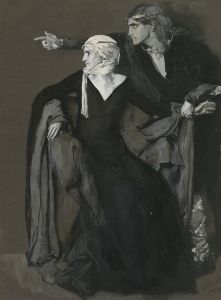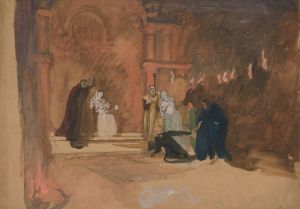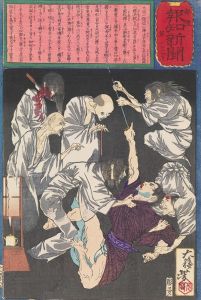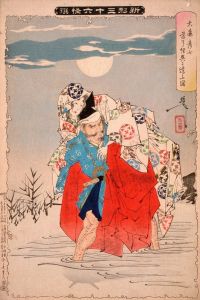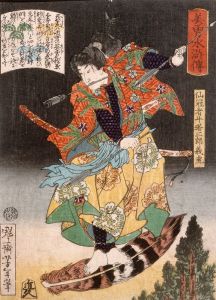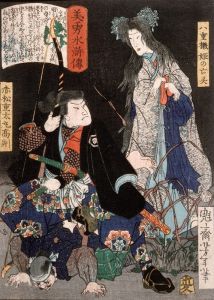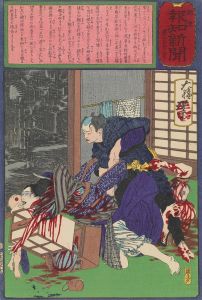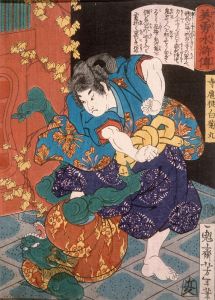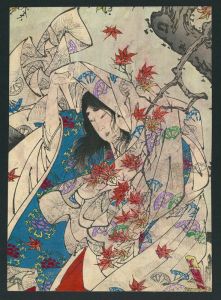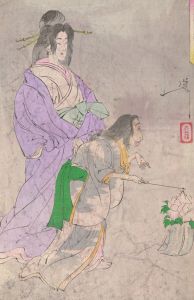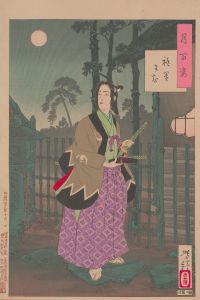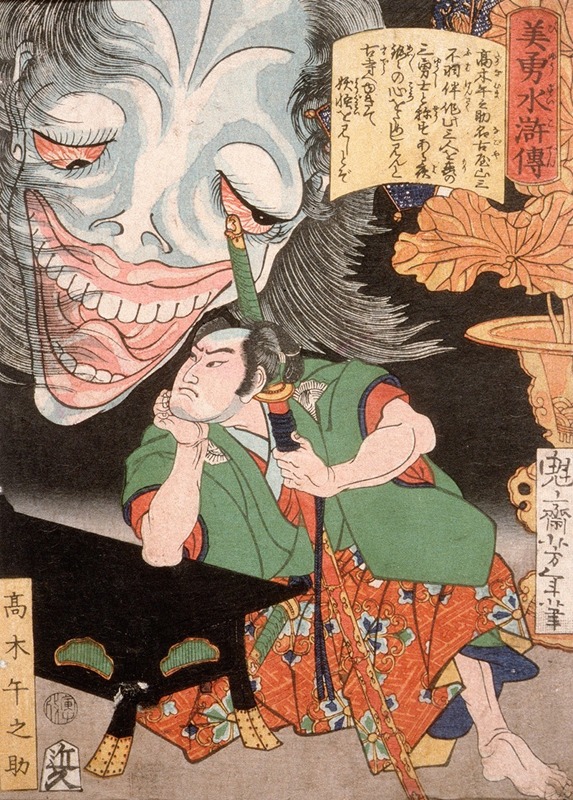
Takagi Umanosuke and the Ghost of a Woman
A hand-painted replica of Tsukioka Yoshitoshi’s masterpiece Takagi Umanosuke and the Ghost of a Woman, meticulously crafted by professional artists to capture the true essence of the original. Each piece is created with museum-quality canvas and rare mineral pigments, carefully painted by experienced artists with delicate brushstrokes and rich, layered colors to perfectly recreate the texture of the original artwork. Unlike machine-printed reproductions, this hand-painted version brings the painting to life, infused with the artist’s emotions and skill in every stroke. Whether for personal collection or home decoration, it instantly elevates the artistic atmosphere of any space.
"Takagi Umanosuke and the Ghost of a Woman" is a woodblock print created by the renowned Japanese artist Tsukioka Yoshitoshi. Yoshitoshi, born in 1839 and passing in 1892, was one of the last great masters of the ukiyo-e genre of woodblock printing and painting. His work is celebrated for its dynamic composition, innovative use of color, and the ability to convey complex narratives and emotions.
This particular print is part of Yoshitoshi's series "New Forms of Thirty-Six Ghosts" (Shinkei Sanjūrokkaisen), which was produced between 1889 and 1892. The series is notable for its exploration of supernatural themes, a popular subject in Japanese art and literature, particularly during the Edo period. Yoshitoshi's interest in ghost stories and the supernatural was reflective of a broader cultural fascination with the mysterious and the macabre.
The print depicts Takagi Umanosuke, a samurai, in a dramatic encounter with the ghost of a woman. This scene is likely inspired by Japanese folklore or kabuki theater, both of which frequently feature stories of vengeful spirits and samurai. In the artwork, Umanosuke is shown in a moment of tension, highlighting Yoshitoshi's skill in capturing the psychological intensity of his subjects. The ghostly figure of the woman is rendered with an ethereal quality, emphasizing her otherworldly nature.
Yoshitoshi's use of color and line work in this print is particularly noteworthy. He employs a limited palette to create a stark contrast between the living and the spectral, enhancing the eerie atmosphere of the scene. The detailed depiction of Umanosuke's armor and the ghost's flowing garments showcases Yoshitoshi's attention to detail and his ability to blend realism with the fantastical.
The "New Forms of Thirty-Six Ghosts" series was created during a period of significant change in Japan, as the country was transitioning from the Edo period to the Meiji era. This was a time when traditional Japanese art forms were being influenced by Western styles and techniques. Despite these changes, Yoshitoshi remained committed to the ukiyo-e tradition, while also incorporating new elements that reflected the evolving cultural landscape.
Yoshitoshi's work, including "Takagi Umanosuke and the Ghost of a Woman," is highly regarded for its artistic and historical significance. His prints offer a window into the cultural and social dynamics of 19th-century Japan, as well as the enduring appeal of supernatural themes in Japanese art. Today, Yoshitoshi is celebrated as a master of his craft, and his prints are studied and admired by art historians and enthusiasts around the world.
In summary, "Takagi Umanosuke and the Ghost of a Woman" exemplifies Tsukioka Yoshitoshi's mastery of the ukiyo-e form and his ability to convey complex narratives through his art. The print is a testament to the enduring fascination with ghost stories in Japanese culture and the skill with which Yoshitoshi brought these tales to life.





